Craftsman Snowblower Manual: A Comprehensive Guide
This manual provides essential guidance for Craftsman snowblower owners, covering model identification, operation, maintenance, and troubleshooting.
Discover parts resources and ensure optimal performance throughout winter seasons.
Understanding Your Craftsman Snowblower
Craftsman snowblowers are designed for efficient snow removal, but understanding their components and operation is crucial for safe and effective use. These machines come in single-stage and two-stage configurations, each suited for different snow conditions and driveway sizes. Single-stage models are typically lighter and ideal for smooth, paved surfaces with lighter snowfall, utilizing an auger to collect and discharge snow.
Two-stage snowblowers, on the other hand, are more powerful and capable of handling deeper snow and gravel driveways. They employ an auger to pull snow into the machine and an impeller to throw it through the discharge chute; Familiarizing yourself with these core differences will help you choose the right model for your needs and operate it correctly.
Key components include the engine, auger, impeller (on two-stage models), chute, and drive system. Proper maintenance of each component is vital for longevity and performance. Always refer to your specific model’s manual for detailed information and safety precautions before operation. Understanding these basics will empower you to tackle winter weather with confidence.
Locating Model and Serial Numbers
Identifying your Craftsman snowblower’s model and serial number is essential for ordering parts, accessing specific manuals, and determining the manufacturing date. These numbers are typically found on a decal affixed to the snowblower’s frame. For single-stage Craftsman snowblowers, check underneath the handle, positioned between the two wheels – a common location for the identification plate.
On two-stage models, the decal is often located in a similar area, though it may also be found on the rear of the machine or near the engine. The model number specifies the snowblower’s design and features, while the serial number is a unique identifier for that specific unit;
Carefully record both numbers as you’ll need them when contacting Sears PartsDirect or other parts suppliers. Having this information readily available streamlines the process of finding the correct replacement parts and ensures compatibility. Refer to official Craftsman resources for precise locations based on your specific model.
Decoding the Serial Number for Manufacturing Date
Determining the manufacturing date of your Craftsman snowblower from its serial number can be useful for understanding its age and potential maintenance needs. While Craftsman doesn’t offer a simple online lookup tool, the serial number itself contains coded information revealing the production timeframe. A typical Craftsman serial number, like 75611194511GB078, holds clues within its sequence of characters.
The latter portion of the serial number often indicates the manufacturing date. Decoding this requires understanding Craftsman’s specific coding system, which can vary over the years. Generally, the characters represent the year, month, and sometimes even the day of production. However, pinpointing the exact date requires referencing historical Craftsman serial number charts or consulting with a knowledgeable parts representative at Sears PartsDirect.
Online forums and owner communities can also be valuable resources for deciphering serial numbers. Sharing your serial number in these groups may connect you with someone who has already decoded that particular series. Knowing the manufacturing date helps assess the snowblower’s overall condition and anticipate potential wear and tear on components.
Safety Precautions
Operating a Craftsman snowblower demands strict adherence to safety guidelines to prevent serious injury. Always wear appropriate attire, including sturdy footwear, gloves, and eye protection, to shield against thrown debris and cold temperatures. Before starting, thoroughly inspect the work area, removing obstacles like rocks, toys, and extension cords that could become projectiles.
Never operate the snowblower with missing or damaged parts, and ensure all guards and shields are securely in place. Keep hands and feet clear of the auger and impeller at all times, even when the engine is off. Avoid operating the machine near pedestrians or pets, and never allow children to operate or play near it.
Be mindful of carbon monoxide poisoning when operating in enclosed spaces. Ensure adequate ventilation or operate outdoors. Disconnect the spark plug wire before performing any maintenance or repairs. Always refuel the snowblower outdoors and allow it to cool completely before adding fuel. Prioritize safety to enjoy reliable snow removal.
Pre-Operation Checklist
Before each use, a thorough pre-operation checklist is crucial for ensuring your Craftsman snowblower functions safely and efficiently. First, verify the oil level and add if necessary, referencing your owner’s manual for the correct type. Inspect the fuel level and ensure fresh fuel is used, avoiding stale gasoline which can damage the engine.
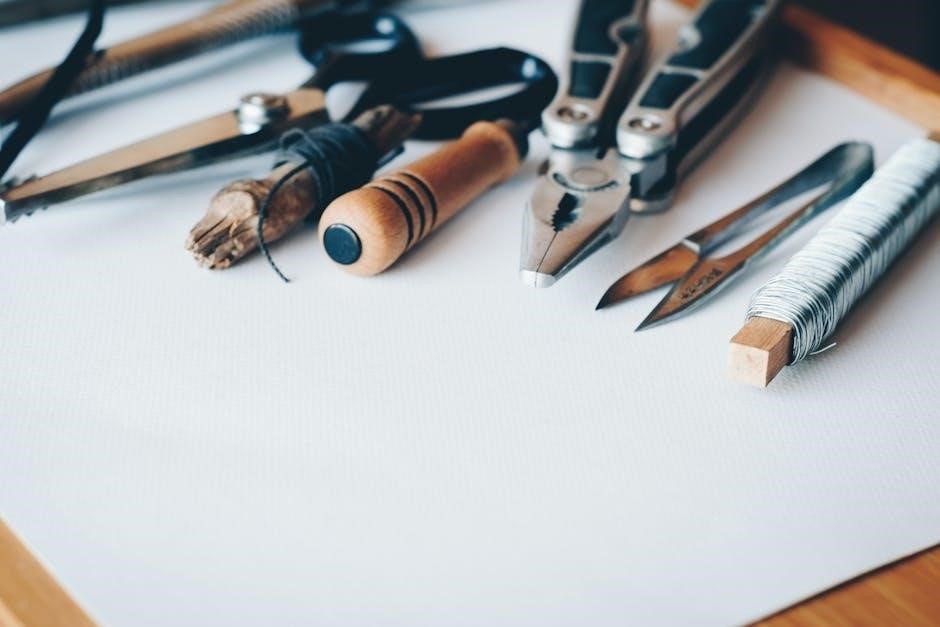
Check the auger and impeller for any obstructions, removing ice or debris that may have accumulated. Confirm that all nuts, bolts, and screws are tightened securely, preventing potential mechanical failures during operation. Examine the shear pins and have replacements readily available, as they are designed to break under stress to protect the machine.
Test the chute control mechanism to ensure smooth and accurate aiming. Finally, review the safety precautions outlined in the manual, reinforcing safe operating practices. Completing this checklist before each use will maximize performance and minimize the risk of accidents or damage.
Starting the Snowblower
Starting your Craftsman snowblower requires a specific sequence, varying slightly between single-stage and two-stage models, but generally follows these steps. Ensure the machine is on a level surface and the auger is disengaged. For electric start models, plug into a grounded outlet and press the start button; for recoil start, prime the engine by pressing the primer bulb several times.
Engage the choke, especially in cold weather, to enrich the fuel mixture. Firmly grasp the starter rope handle and pull with a smooth, controlled motion. Avoid pulling the rope to its full extent or jerking it, which can damage the starter mechanism. Once the engine sputters, gradually disengage the choke.
Allow the engine to warm up for a few minutes before engaging the auger. If the engine fails to start after several attempts, consult the troubleshooting section of the manual. Always keep hands and feet clear of moving parts during the starting process and operation.

Single-Stage vs. Two-Stage Models
Craftsman snowblowers come in two primary configurations: single-stage and two-stage, each designed for different snow conditions and clearing needs. Single-stage models utilize a rotating auger to collect and discharge snow in one motion, making them ideal for smooth, paved surfaces and lighter snowfall – typically less than 8 inches.
These are generally more compact and easier to maneuver, but less effective with heavy, wet snow or gravel. Two-stage snowblowers, conversely, employ an auger to scoop up the snow and then use an impeller to throw it further down the discharge chute. This system excels at handling deeper snowfalls, heavier snow, and uneven surfaces like gravel driveways.
Two-stage models offer greater throwing distance and power, but are larger, heavier, and require more physical effort to operate. Understanding these differences is crucial for selecting the right snowblower for your specific climate and property.
Operating Instructions ― Single Stage
Before starting your Craftsman single-stage snowblower, ensure the area is clear of obstacles like rocks, toys, and doormats. Always wear appropriate safety gear, including eye protection and warm clothing. Begin by priming the engine according to your model’s instructions – typically by pressing the primer bulb several times.
Engage the auger lever and pull the starter cord firmly, allowing the engine to warm up briefly. Once running, slowly release the auger lever to begin snow removal. Overlap each pass slightly to prevent leaving strips of snow. Avoid throwing snow towards people, pets, or vehicles.
Steer the snowblower using the handle, maintaining a comfortable and controlled pace. If the auger becomes clogged, immediately disengage the auger lever and shut off the engine before attempting to clear the blockage with a clean tool. Never use your hands! Regularly adjust the discharge chute direction for optimal snow placement.
Operating Instructions ⎼ Two Stage
Prior to operating your Craftsman two-stage snowblower, inspect the area for hazards and ensure adequate lighting. Wear safety glasses and sturdy footwear. Begin by confirming the auger and impeller are free from obstructions. Prime the engine as directed in your model’s manual, usually by pressing the primer bulb.
Engage the drive control lever and pull the starter cord to initiate the engine. Allow the engine to warm up for a short period before engaging the auger. Slowly release the auger lever to begin snow removal, utilizing the self-propelled drive for controlled movement. Adjust the speed control to match snow conditions.
Overlap each pass slightly for complete snow removal, and utilize the chute control to direct the snow stream away from obstacles and people. If the auger clogs, disengage both the auger and drive levers, shut off the engine, and clear the blockage with a suitable tool – never your hands. Regularly monitor engine performance and adjust settings as needed.
Adjusting the Snow Thrower Chute
The snow thrower chute on your Craftsman snowblower directs the discharge of snow, and proper adjustment is crucial for efficient operation. Locate the chute control lever, typically positioned on the right-hand side of the machine. This lever controls both the horizontal rotation and vertical deflection of the chute.
To adjust the horizontal direction, firmly grasp the chute handle and move the control lever left or right. Ensure the chute rotates smoothly and freely. For vertical adjustment, use the dedicated vertical control lever to raise or lower the chute outlet. This allows you to control the height and distance of the snow stream.
Always disengage the auger before making significant chute adjustments to prevent potential damage or injury. Avoid aiming the chute towards people, animals, or property. Regularly check the chute control cables for proper tension and lubrication to maintain smooth operation. A properly adjusted chute maximizes throwing distance and minimizes wasted effort.

Understanding the Auger System
The auger system is the heart of your Craftsman snowblower, responsible for collecting and channeling snow into the impeller. It consists of one or two rotating augers – helical screws that scoop up the snow. Single-stage snowblowers typically have a single auger that throws the snow directly out of the chute, while two-stage models utilize a separate impeller for increased throwing power.
Augers are driven by the engine via a belt and are enclosed within a housing to prevent debris from being thrown. The auger blades are designed with a specific pitch and angle to efficiently break up and move snow, even heavy, wet snow. Understanding the auger’s function is vital for safe operation and maintenance.
Never place your hands or feet near the auger while the engine is running. Always disengage the auger and disconnect the spark plug wire before performing any maintenance or clearing obstructions. Regular inspection of the auger blades for wear and damage is crucial for optimal performance and safety.
Maintaining the Auger System
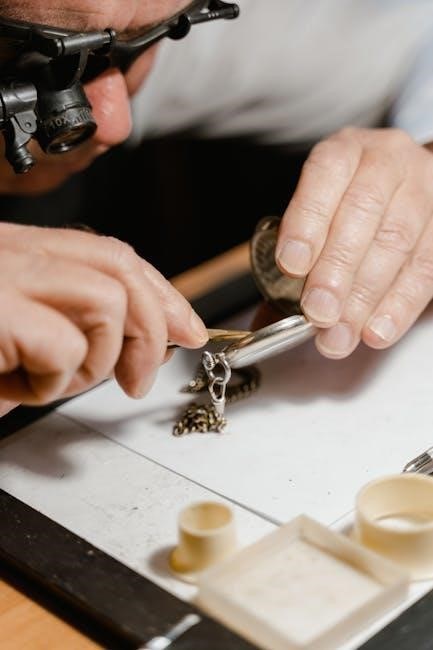
Regular maintenance of the auger system is crucial for ensuring your Craftsman snowblower operates efficiently and safely. Begin by frequently inspecting the auger blades for wear, damage, or bending. Replace any damaged blades immediately to prevent further issues and maintain optimal snow-clearing performance.
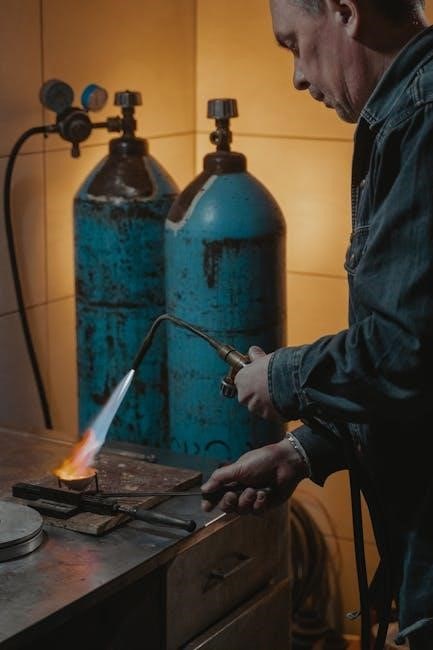
Periodically check the shear pins that protect the auger system from damage caused by hitting solid objects. These pins are designed to break before more serious damage occurs. Keep a supply of replacement shear pins on hand for quick replacement. Always use the correct replacement pins specified for your model.
Lubricate the auger gearbox according to the manufacturer’s recommendations. This helps reduce friction and wear, extending the life of the gearbox. Inspect the auger housing for any signs of damage or wear, and repair as needed. Always disconnect the spark plug before performing any maintenance on the auger system to prevent accidental starting.
Belt Maintenance and Replacement
Maintaining the drive belt and auger belt is vital for smooth snowblower operation. Regularly inspect belts for cracks, fraying, glazing, or excessive wear. A worn belt will slip, reducing power and potentially causing damage to other components. Check belt tension; it should be firm but not overly tight.
To replace a belt, typically you’ll need to disconnect the spark plug and access the belt housing. Refer to your specific model’s diagram for precise instructions. Loosen the tensioner pulley to remove the old belt, then install the new belt, ensuring it’s properly seated in all grooves.
Re-engage the tensioner and verify the belt is tracking correctly. Always use the correct replacement belt specified for your Craftsman snowblower model. Incorrect belts can lead to premature failure and reduced performance. Proper belt maintenance extends the life of your snowblower and ensures efficient snow removal.
Shear Pins: Function and Replacement
Shear pins are safety devices designed to protect the auger and gearbox from damage. They are intentionally weak and will break if the auger encounters a solid obstruction like ice or a rock. This prevents costly repairs to the more expensive internal components.
Never replace shear pins with bolts or hardware that isn’t specifically designed as a shear pin. Using stronger replacements defeats the safety purpose and risks severe damage to the snowblower. Locate the shear pins on the auger housing, typically near the auger shaft.
To replace a broken shear pin, disconnect the spark plug. Use a punch and hammer to drive out the remnants of the old pin. Insert the new shear pin, ensuring it’s properly aligned, and secure it with the retaining clip or fastener. Always carry spare shear pins during snow removal, as they are consumable items and will need periodic replacement.
Oil Change Procedures
Regular oil changes are crucial for maintaining your Craftsman snowblower’s engine health and longevity. Refer to your specific model’s manual for the recommended oil type and change interval – typically after every 25 hours of operation or annually.
Before starting, warm up the engine briefly to help the oil flow more easily. Disconnect the spark plug wire for safety. Locate the oil drain plug, usually at the bottom of the engine. Position a drain pan underneath to catch the used oil.
Remove the drain plug and allow the oil to drain completely. Reinstall the plug securely, then add the recommended amount of fresh oil using a funnel. Check the oil level with the dipstick, ensuring it’s within the “full” range. Properly dispose of the used oil at a recycling center.
Fuel System Maintenance
Maintaining a clean fuel system is vital for reliable starting and optimal performance of your Craftsman snowblower. Stale fuel can cause significant issues, especially during prolonged storage. Always use fresh fuel, ideally within 30 days, and consider adding a fuel stabilizer.
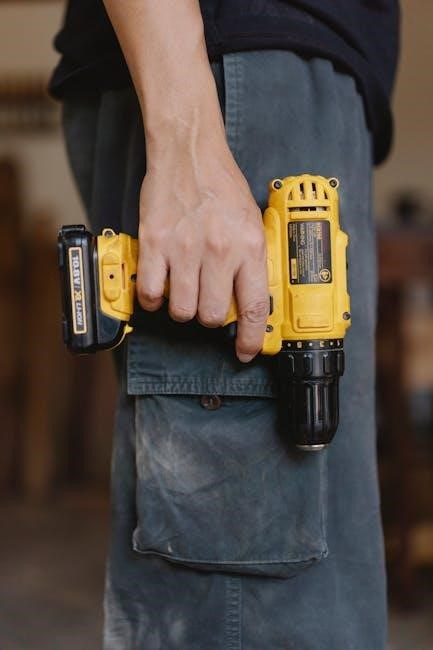
Before storage, drain the fuel tank completely to prevent fuel degradation. Run the engine until it stalls to clear any remaining fuel from the carburetor. Inspect the fuel lines for cracks or leaks, replacing them if necessary.
The fuel filter should be checked and replaced annually, or more frequently if you notice reduced engine performance. A clogged filter restricts fuel flow, leading to starting problems and power loss. Proper fuel maintenance ensures your snowblower is ready when winter arrives.
Spark Plug Replacement
Regular spark plug replacement is crucial for maintaining optimal engine performance in your Craftsman snowblower. A worn or fouled spark plug can cause difficult starting, reduced power, and increased fuel consumption. It’s generally recommended to replace the spark plug annually, before the start of each snow season.
Before removing the old spark plug, ensure the engine is completely cool. Disconnect the spark plug wire and use a spark plug socket to carefully unscrew the plug. Inspect the old plug for signs of wear, fouling, or damage.
When installing the new spark plug, gap it correctly according to the manufacturer’s specifications (refer to your owner’s manual). Hand-tighten the plug, then use a torque wrench to tighten it to the specified torque. Proper spark plug maintenance ensures reliable ignition and efficient engine operation.
Troubleshooting Common Issues
Encountering problems with your Craftsman snowblower? This section addresses frequent issues and provides solutions. No-start conditions often stem from a faulty spark plug, empty fuel tank, or a clogged carburetor. Ensure fresh fuel is present and the spark plug is functioning correctly. A clogged carburetor may require cleaning or professional servicing.
If the auger isn’t engaging, check the shear pins – these are designed to break under stress, protecting the auger system. Replace broken shear pins with new ones of the correct size. Chute control problems can indicate a frozen cable or a malfunctioning chute control mechanism. Inspect the cable for obstructions and lubricate moving parts.

Remember to consult your owner’s manual for specific troubleshooting steps related to your model. Safety first – always disconnect the spark plug wire before performing any maintenance or repairs.
No-Start Conditions
Facing a frustrating no-start situation with your Craftsman snowblower? Several common culprits could be to blame. First, verify the fuel system – ensure the fuel tank isn’t empty and the fuel shut-off valve (if equipped) is open. Stale fuel can also cause issues; consider using a fuel stabilizer or draining old fuel.
Next, inspect the spark plug. A fouled or damaged spark plug won’t ignite the fuel-air mixture. Remove the plug, check for wear, and clean or replace it as needed. Confirm a strong spark by testing with a spark plug tester. Also, examine the carburetor; a clogged carburetor restricts fuel flow, preventing starting. Cleaning or rebuilding the carburetor might be necessary.
Don’t overlook the safety interlocks. Ensure all levers and controls are properly engaged. Finally, check the engine’s recoil starter for proper function. A damaged recoil starter may prevent the engine from turning over.
Auger Not Engaging
If your Craftsman snowblower’s auger isn’t spinning, several issues could be the cause. A primary suspect is a blown shear pin – these are designed to break under excessive stress, protecting the auger gearbox. Inspect and replace the shear pin with the correct type; using the wrong pin can lead to further damage.
Next, check the auger drive belt. A worn, cracked, or broken belt won’t transmit power to the auger. Ensure the belt is properly tensioned and aligned. Inspect the auger gearbox for any signs of damage or leaks. Internal gearbox issues may require professional repair.
Also, verify the auger engagement cable is functioning correctly. The cable may be stretched, broken, or disconnected. Finally, ensure there isn’t any debris (ice, packed snow) obstructing the auger blades or gearbox. Clear any obstructions before attempting to restart the snowblower.
Chute Control Problems
Difficulty controlling the snow chute direction on your Craftsman snowblower often stems from issues with the control cable or the chute’s rotation mechanism. Begin by inspecting the chute control cable for kinks, breaks, or disconnections. Ensure it moves freely throughout its entire range of motion.
If the cable appears intact, examine the chute’s gear system. Ice buildup or corrosion can hinder smooth rotation. Apply a silicone-based lubricant to the gears to improve movement. Check for obstructions – packed snow or debris can physically block the chute’s rotation.
For electric chute control models, verify the electric motor is receiving power and functioning correctly. A faulty motor or wiring issue will prevent chute adjustment. Inspect the linkage connecting the control lever to the chute for any damage or looseness. Tighten any loose connections and replace damaged parts as needed.
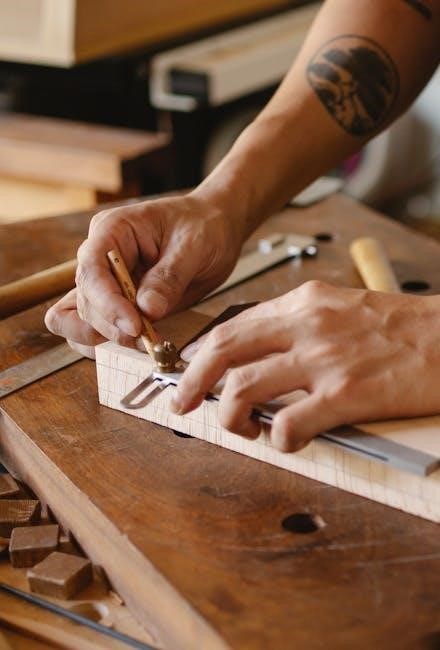
Storage and Winterization
Proper storage and winterization are crucial for preserving your Craftsman snowblower’s longevity. Before long-term storage, thoroughly clean the machine, removing all snow and ice accumulation. This prevents corrosion and damage during the off-season.
Stabilize the fuel by adding a fuel stabilizer to the gasoline tank, then run the engine briefly to circulate the treated fuel throughout the system. This prevents fuel degradation and carburetor issues. Alternatively, drain the fuel tank completely and run the engine until it stalls to ensure a dry fuel system.
Disconnect the spark plug wire to prevent accidental starting. Apply a corrosion inhibitor to all metal surfaces. Store the snowblower in a dry, sheltered location, covered to protect it from dust and the elements. Check and lubricate the auger and drive components before storage to prevent seizing.

Craftsman Snowblower Parts and Resources
Maintaining your Craftsman snowblower often requires replacement parts. Fortunately, numerous resources are available to ensure you find what you need. Sears PartsDirect is a primary source, offering a comprehensive catalog of genuine Craftsman snowblower parts, including belts, auger components, shear pins, and more. Their website allows searching by model number for accurate results.
Local hardware stores and small engine repair shops frequently stock common replacement parts. Online retailers like Amazon and eBay also offer a wide selection, but verify compatibility with your specific model. When ordering parts, always have your snowblower’s model and serial number handy to guarantee a proper fit.
Craftsman’s official website may provide parts diagrams and support resources. Consider joining online forums dedicated to snowblowers; these communities can offer valuable advice and part sourcing tips. Remember to prioritize genuine Craftsman parts for optimal performance and reliability.